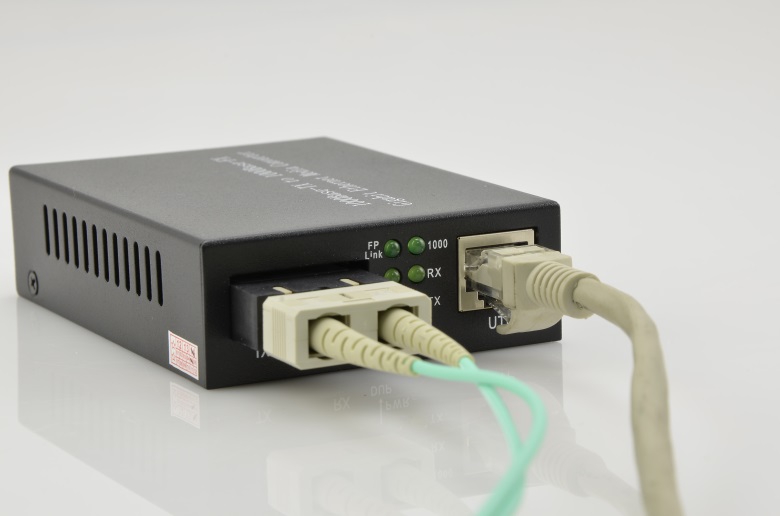In the field of optical communications, many devices have similar functions, such as GBIC vs media converter. They can be considered as the equipment for photoelectric conversion. But do you know their corresponding operating principles? How can the optical transceiver be used in conjunction with the media converter? In this article we are going to talk about their working ways and applications.
GBIC vs Media Converter: How Does Optical Transceiver Work
As a kind of optical transceiver, GBIC, also known as gigabit interface converter, is commonly used in GbE and Fibre Channel environments. The optical module is made up of optoelectronic devices with transmitter and receiver, functional circuits and optical interfaces. To put it simply, the function of an optical transceiver is photovoltaic conversion. The transmitter converts an electrical signal into an optical signal and the receiving end transforms the optical signal into an electrical signal so that the information could transmit in the optical fiber. The principle of optical transceiver is the same as media converter, but it is safer and more efficient than media converter.
GBIC vs Media Converter: How Does Media Converter Work
Media converter is made up for the traditional Ethernet short transmission distance to realize long distance transmission of the signal. For GBIC vs media converter, the latter is a simple networking device that makes it possible to connect two different media types, such as twisted pair copper with fiber optic cable. Currently, there are commonly two types of media converters: copper to fiber media converter and fiber to fiber media converter.
GBIC vs Media Converter: Coordination Between Optical Transceiver and Media Converter
A fiber media converter is used to extend copper UTP Ethernet cabling to distances beyond 100 m by converting the signals to fiber optic cabling. Media converters have two types of ports. One is for copper and the other is for fiber. In terms of fiber ports, there are also two kinds. One is designed for fiber optic transceivers (SFP, XFP and etc), and the other for fiber optic patch cables (SC, LC and etc). The copper ports are designed for RJ45 copper cables. SFP module is for LC while GBIC is for SC.
If you want to use an application that uses fiber media converters, the copper and fiber industry standards must match. Below shows the coordination between SFP vs media converter.
1. Connect the copper port of Cisco switch with RJ45 port of fiber media converter by using an UTP cable.
2. Insert an SFP module into SFP port of fiber media converter.
3. Insert an SFP module into SFP port of Brocade switch.
4. Use fiber optic patch cable to connect the fiber media converter with Brocade switch.
Conclusion
To sum up, media converter is a device that converts electrical signal used in copper unshielded twisted paired (UTP) network cabling into light waves used in fiber optic cabling, and vice versa. Media converter is usually used with the optical fiber patch cords to extend the transmission distance. What should you notice is that different optical transceiver, like SFP and GBIC, should be connected with relevant ports, such as LC, SC and etc. GBIC vs media converter is not the only way to achieve photovoltaic conversion. If you are looking for a media converter, Fiberstore would be a good choice.

